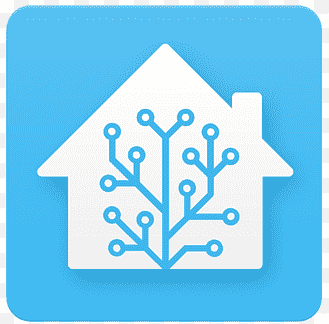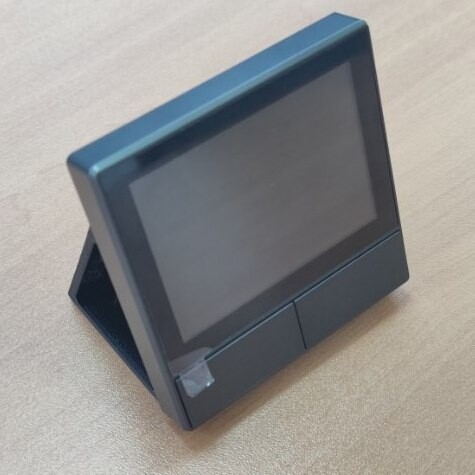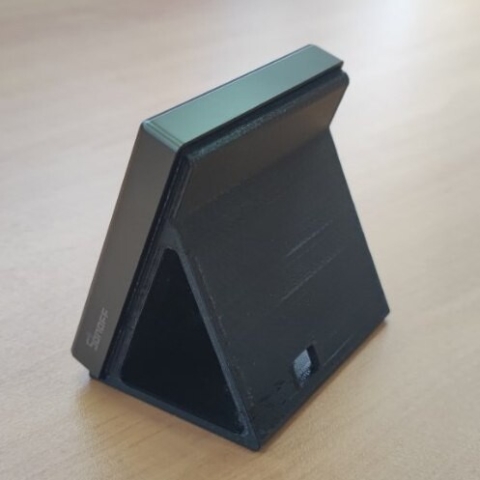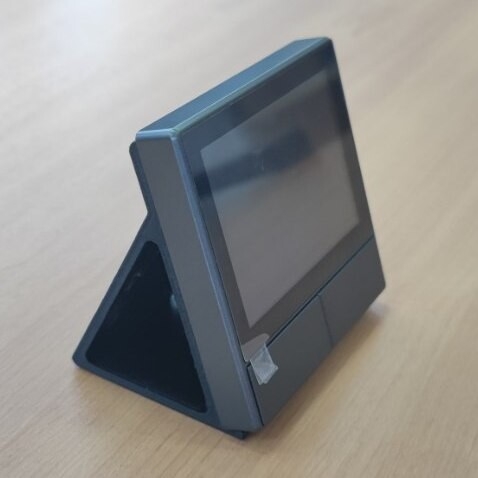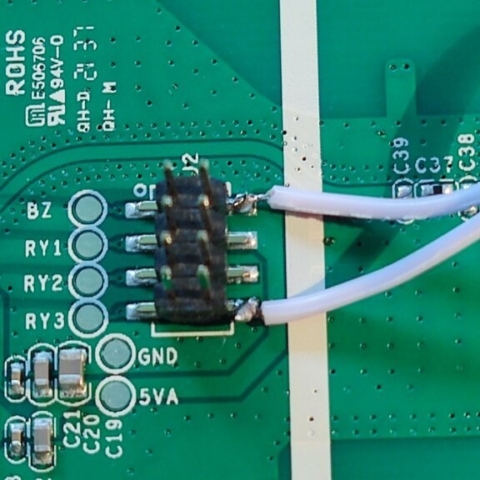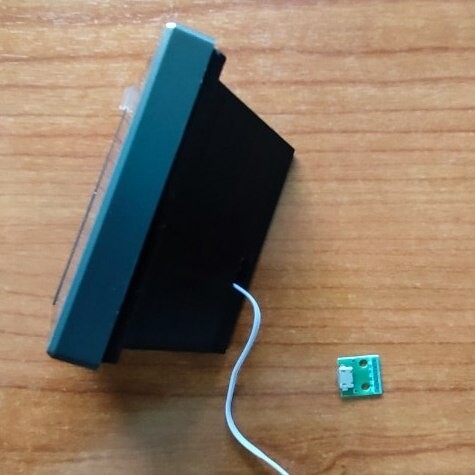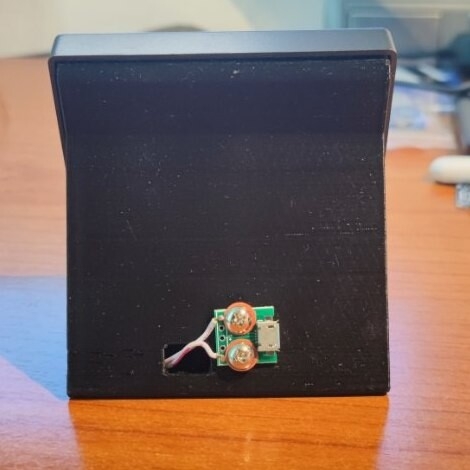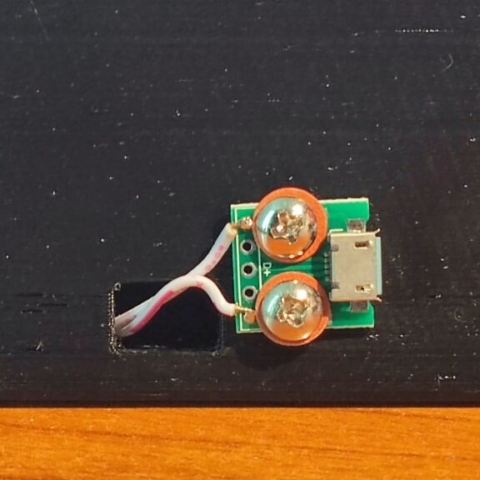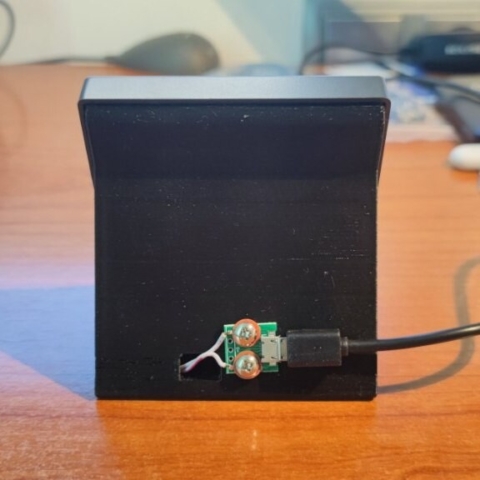Gracias a Nico un compañero me imprimió en su impresora 3D este soporte pondremos nuestra pantalla de forma externa y autónoma alimentado por USB
Así quedaría una vez impreso
Lo primero será desmontarlo y soldarle los dos cables de alimentación al conector de 8 pins

Nos quedaría como este
Para alimentarlo usaremos este adaptador micro USB el cual fijaremos a la peana
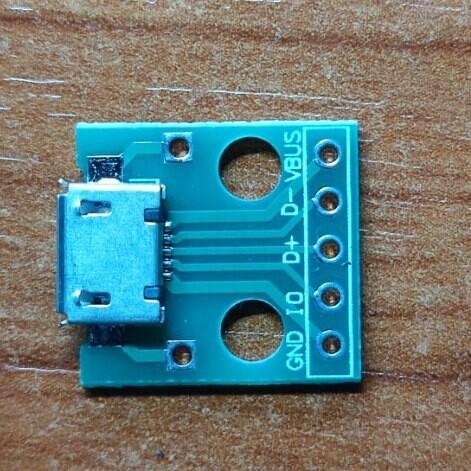
Pasaremos los cables por el agujero y soldaremos los dos cables a GND y VBUS respectivamente
Fijaremos con dos tornillos autoroscantes la plaquita a la estructura , estos tornillos son bastante grandes , pero bien aislados con arandelas aislantes no deberían dar problemas.
Y con esto y un bizcocho ya tenemos nuestro panel funcionando de forma autónoma …………………
